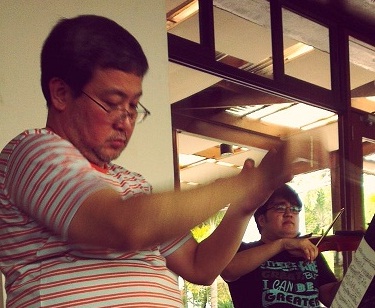By PABLO A. TARIMAN
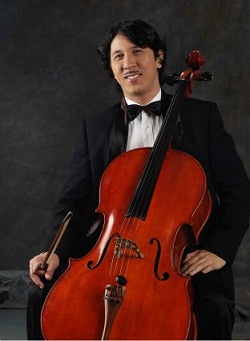 WHEN you are young and nimble, you go for it like one of those challenges that help you size up the width and breadth of your musical talent.
WHEN you are young and nimble, you go for it like one of those challenges that help you size up the width and breadth of your musical talent.
Celebrated pianist Cecile Licad joined her first competition at age 11 but only to test whether she has what it takes to try an audition at Curtis Institute of Music in Philadelphia in 1972.
The competition was the Manila Symphony Orchestra Young Artists Audition and she easily made it as one of the six winners with Prof. Regalado Jose as her second pianist.
But one member of the jury nearly disqualified her for the choice of her concerto: the Chopin No. 2. The judge thought that at age 11, Licad was too young for the big concerto.
Another member of the jury, Prof. Sergio Esmilla, Jr. insisted that the choice of the concerto should not be used to sacrifice the remarkable talent of the child.
But on the winners’ concert just a few days before the declaration of martial law in 1972, the final judge was the audience.
Licad was vindicated when she got the most applause and music critic Lito Molina, then writing for Manila Times, wrote: “Cecile (Licad) projected the romanticism of Chopin’s Piano Concerto No. 2 with the intensity of someone many years her senior.”
Wrote Rosario B. Licad in her book, My Daughter Cecile: “As can be expected, no competition is without its share of controversy.” She added that competition actually played very little role in her daughter’s musical life.
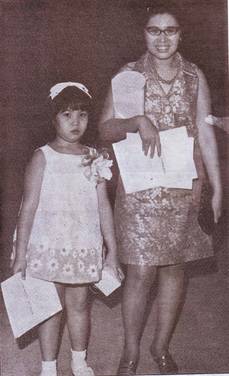 But Licad’s mother posed this question: if her daughter lost her first competition, would it have undermined her self-confidence?
But Licad’s mother posed this question: if her daughter lost her first competition, would it have undermined her self-confidence?
The role of competition in a musician’s life comes to mind as the National Music Competition for Young Artists (NAMCYA) observes its 40th year with a concert at the CCP tomorrow (August 25) featuring past and recent winners.
NAMCYA secretary general Renato Lucas said the concert will feature pianists, woodwind and string instrumentalists as well as vocal soloists who have made their mark in the music scene.
“The roster of our NAMCYA winners is practically who’s who in the Philippine music world. Some have been very privileged to be recognized abroad as well. Indeed, the NAMCYA has been a principal instrument in discovering major music talents from all over the country,” Lucas pointed out.
Lucas said discovering musical talents is a tedious process that involves some hundreds of musicians, trainors and administrators from the country’s sixteen regions.
NAMCYA, he said, has a two-fold program: discovering and developing young Filipino musicians from every region of the country carried through annual competitions; workshops and training and to promote Filipino music.”
Himself a NAMCYA first prizewinner in the cello category in 1978, Lucas said his more than three decades with the Philippine Philharmonic provided him with a window to see NAMCYA evolve through the years in his role as musician and mentor. “NAMCYA has invited me on many occasions to be part of their panel of judges. Dr. (Ramon) Santos subsequently invited me to be part of the board of trustees and when Dr. (Ramon) Acoymo relinquished his position as secretary general, he nominated me and got the position for me, it is payback time.”
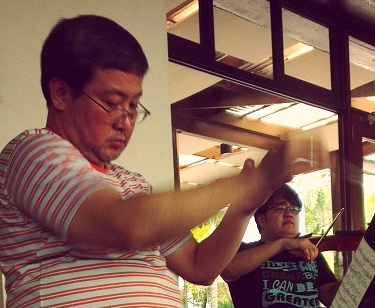 Reflecting on his competition years, Lucas said the joy of winning is very rewarding until he realized that the winning is just a part – not the end — of a long journey towards one’s obligation to improve one’s craft.
Reflecting on his competition years, Lucas said the joy of winning is very rewarding until he realized that the winning is just a part – not the end — of a long journey towards one’s obligation to improve one’s craft.
The cellist said competition demands many things from the aspiring artist. “Tenacity of the spirit, patience to endure long lonely hours in the practice room, sustaining ones idealism as an artist… The list could go on. One thing for sure, the visions and dreams NAMCYA have supplemented mine.”
He defines the pros and cons of music competitions as he experienced it: “Prize money was great. Accolades from friends were ego-boosting then. My parents collected newspaper clippings and were proud of me. My teacher’s efforts were rewarded. For short, competitions made me strive many times over to be always the best I could be.”
However, competition has its dangers. Losing can discourage young talents but it can also help the artist build a strong character.
He advices future contestants to: “Practice and pray.”
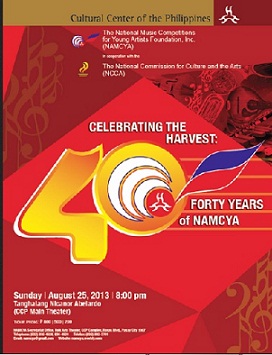 “One should pray not just to win but also to have faith in oneself. Because being hard on yourself can make you neurotic. Balance work and play. Many young musicians become socially dysfunctional because their social life was not fully developed. I always impart the importance of these things to my conservatory students,” he said.
“One should pray not just to win but also to have faith in oneself. Because being hard on yourself can make you neurotic. Balance work and play. Many young musicians become socially dysfunctional because their social life was not fully developed. I always impart the importance of these things to my conservatory students,” he said.
Lucas said competition isn’t everything in an artist’s life nor is it the only venue to discover talents. “The world of competition is a long and winding road that can make or unmake a promising talent. That is why we prefer to create an atmosphere of a friendly and healthy competition in the new editions of the competition.”
Another former NAMCYA prizewinner, MSO conductor Arturo Molina coached violinist Diomedes Saraza, Jr. in his first competition.
Said Molina: “I always tell my students that when you lose, it doesn’t mean you are not any good. It can mean the judges have different taste. The only thing I impart to my students is to play well and practice a lot even if they are not joining competitions. Winning is just a means – not the ultimate goal – to becoming a real artist.”
(The concert, “Celebrating the Harvest: Forty Years of NAMCYA” will take place at 8 p.m. August 25, 2013 at the CCP main theater with the Philippine Philharmonic Orchestra under Olivier Ochanine. Conductor Arturo Molina and Diomedes Saraza, Jr. Saraza are the featured artists – along with pianist Oliver Salonga — in the August 31 MSO concert at the UP Abelardo Hall in Diliman, Quezon City. Tel. 5763132 or 09065104270)
